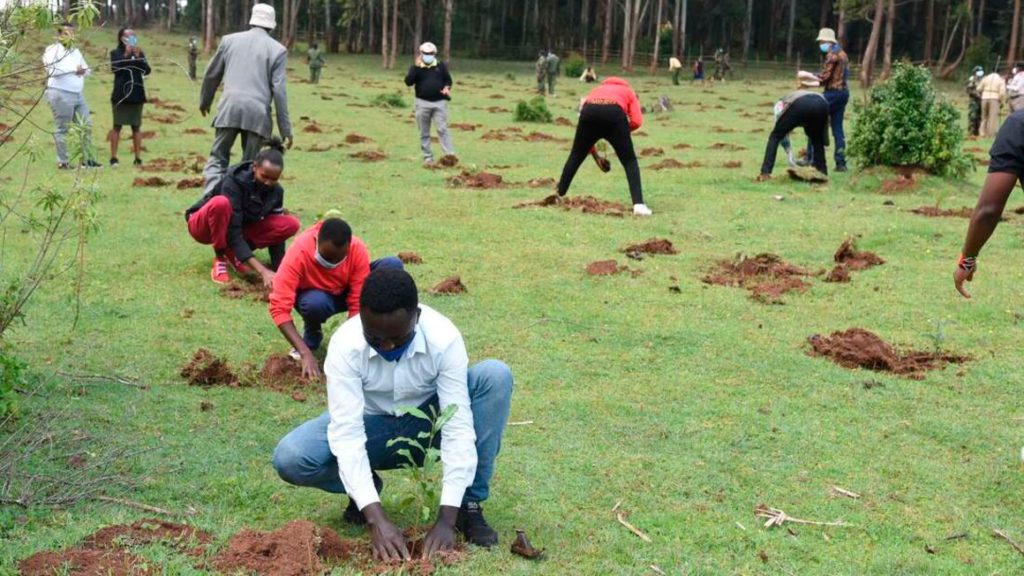Members of the public plant tree seedlings during this year’s Kaptagat Forest Annual Tree Planting exercise held at Kaptagat Forest in Elgeyo Marakwet County where 11,000 seedlings were planted on July 23, 2021. PHOTO | JARED NYATAYA | NMG The advancement of forestry is intrinsic in achievement of sustainable development global goals.
This is due to the intricate roles that they play in the ecosystem ranging from providing food through agroforestry, acting as carbon sinks thus promoting good health by absorbing approximately two billion tonnes of CO2 each year, providing raw materials for production of consumables and as a source of income through commercial forestry.
In Kenya for example, there are five main forests that contribute to 75 percent of the entire country’s water supplies. Further, over 80 percent of energy consumed in Kenya is associated with forests.
There are also non–timber forestry products that include medicinal extracts, cosmetics. Forestry, therefore, becomes an economic pillar that needs to be advanced by actors in the government, non-State, and private sector.
It is a major contributor to the economic growth of any country. Commercially, forestry has provided several opportunities that innovators and investors need to tap into.
Countries needs more investments in commercial forestry which will provide numerous opportunities for income generation and betterment of livelihoods. There will also be other opportunities around the forestry value chain including transport, design, processing, packaging and marketing among other support services.
Investment in these value chains is not only profitable but also sustainable and considerate of making our world a better place, improving the quality of life and recognising that future generations will need to find a world that is habitable.
Strategic partnerships in commercial forestry are consequently paramount to growth of commercial forestry sector.
The recent launch of Green Economy Youth Activation Programme (GrEYAP) project by Kenya Climate Innovation Center (KCIC) with the support of United Nations Development Programme (UNDP) as an example will accelerate development of commercial forestry in the country.
The United Nations Strategic Plan for Forests 2030 provides a paradigm that promotes forests and their sustainable management. This is in line with promoting forest cover where in Kenya for instance there is a need to plant over 1.9 billion trees to achieve 10 percent forest cover.
It is also in line with the recognition of the importance of forestry to the attainment of the Sustainable Development Goals.The GrEYAP project aimed at addressing an enormous gap in the wood sector in […]
